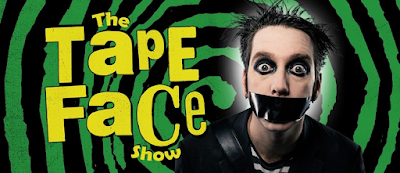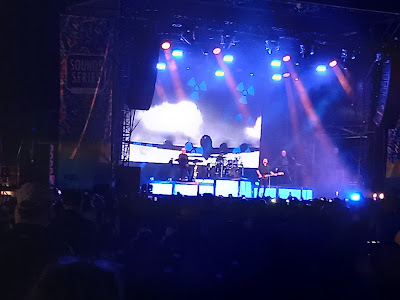As autumn swings into winter, it’s time to look indoors for
our entertainment options. To satisfy this need, the New Zealand International Comedy Festival is in its 33rd year. International, as it includes
many overseas performers, gracing us with their presence, as well as
nationally-known and up-and-coming New Zealanders…and even
internationally-known New Zealanders!
First cab off the rank, at least as far as we were
concerned, was
Nish Kumar. Unfortunately, New Zealand’s weather decided
otherwise, and a
storm that hit New Zealand caused the closure of the venue on
the night we’d booked. The show was rescheduled to the following night, but at
10:30pm we figured it was way past our bedtime, so we took the refund instead.
Bugger. I was looking forward to that one.
No matter, the following week we were booked to see
Hayley Sproull, or Haley Everything as she should be known, as she seems to be doing
everything these days. We first saw her when
Miss Fletcher Sang The Blues in - crikey! - 2012! But
since then she’s gone from strength to strength, with many hit stand-up shows,
and starring in New Zealand
comedies; participating in and hosting panel shows
(
7 Days,
Have You Been Paying Attention?), and hosting the annual
Comedy Gala
for the last two years. She also has a
radio show. She’s a busy woman! Her
show,
Baroness, was the by-now-familiar mix of over-sharing and stories of the
DINK lifestyle, culminating in a date with
Jason Momua.
The following night we were at
Circa Theatre. Whilst not
technically part of the Comedy Festival, they’re currently performing the
comedic
Give Way: The Musical. Nicola was on ushering duties, so we went along.
This also gave us the opportunity to try out
ChouChou, the new brasserie
attached to the theatre, which has recently had a makeover. I had the snapper
salad Nicoise, and Nicola had chicken Cordon Bleu. Note to any aspiring chefs
out there: snapper is not a good substitute for tuna in a Nicoise.
The musical follows the adventures of Sophie, a newly-minted graduate in Traffic Management Engineering. She is anxious to make
her mark on the world, and when the opportunity to revamp New Zealand’s weird
give way rules presents itself, she leaps at it. The musical is based on a true
story, in that the give way rules were changed in 2012 to fit in with what the
rest of the world does. There’s a love story, inevitably; as well as protests, conniving,
popularity-seeking, mental health, and insights into public policy-making which
seem far-fetched but are probably true. A cast of five Circa stalwarts play all
the parts, of which there were many: each actor had a main character, but also
had to fill in for Sophie’s parents, The Minister of Transport, and other roles
as required. All jolly good fun, and with the high production values we’ve come
to expect from Circa.
We had a night off, then plunged back into the fray on
Saturday night, going to see The Tape Face Show. We first saw Sam Wills when he
was but a boy, called The Boy With Tape On His Face. He has since shortened his
name and reached an international audience after reaching the finals on
America’s Got Talent. His show is performed entirely without words, as you
might expect, but there’s a lot of music (it helps to be familiar with what the
songs are and the films associated with them), and a lot of audience participation.
We were safe from this aspect as he generally needed people to be on or near
the end of their row to be able to get up on stage, and we were well-placed in
the centre of ours. He also played some of the classics, including Endless
Love. We did, however, participate in the finale of the show, which involved 99
Red Balloons. Go see him if you get the chance, he’s hilarious!
Our final foray was something a little different – a comedy
cabaret show called
Revel at the
Hannah Playhouse. They’d rearranged things
inside from the usual tiered seating to provide an enlarged performance area
centred on the bar, and some seating on the level with more tiered seating at
the back. Revel is the name of the bar, or Speakeasy, and we were encouraged to
arrive early to take advantage of the bar and have a cocktail. A jazz band was
playing as we entered.
The bar was cleared for the performance, which included
singing, dancing, comedy, burlesque, acrobatics and circus trickery; performed
by a troupe of six. There was an interval when the bar was briefly open for
business again, and then cleared away very quickly to allow the performance to
continue. It was all jolly good fun and certainly a bit different from your
standard comedy routines.
That’s about it for this year’s fest – but there’s plenty
more entertainment to come over the winter in the nation’s cultural capital!





























